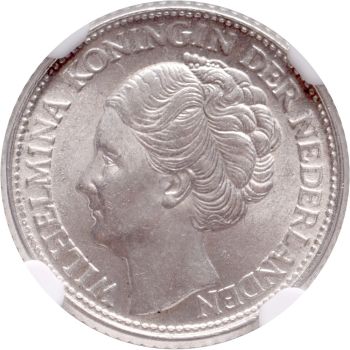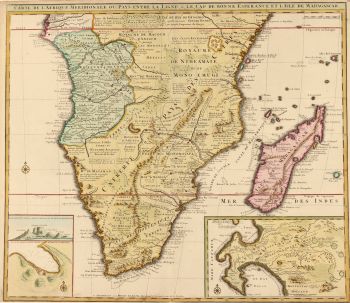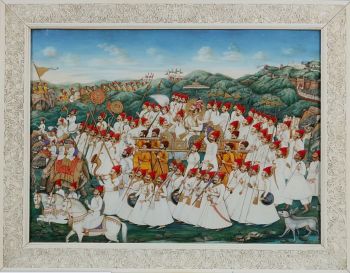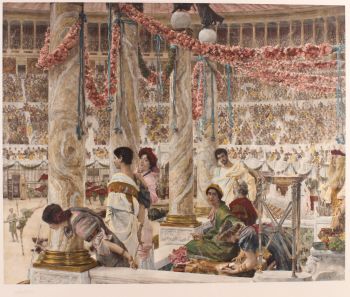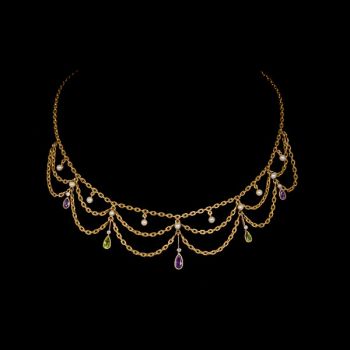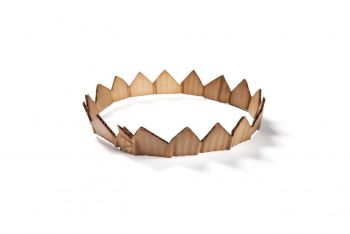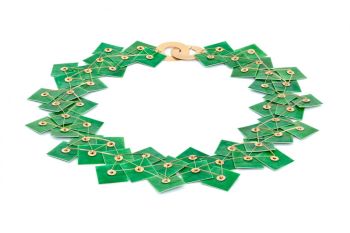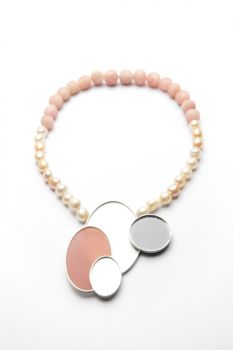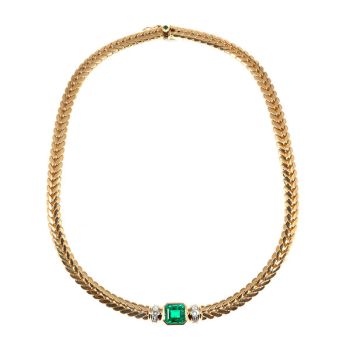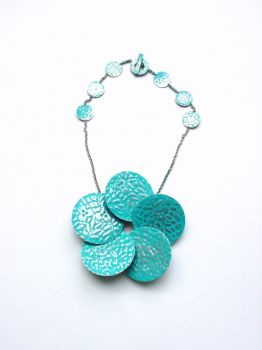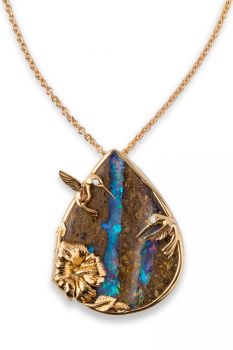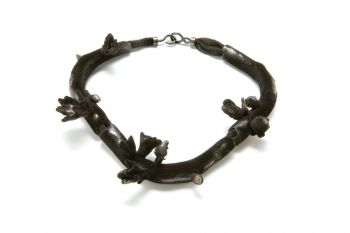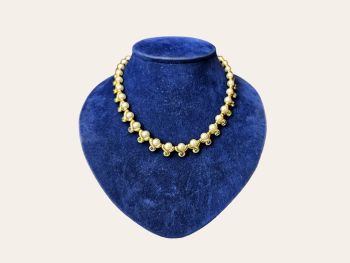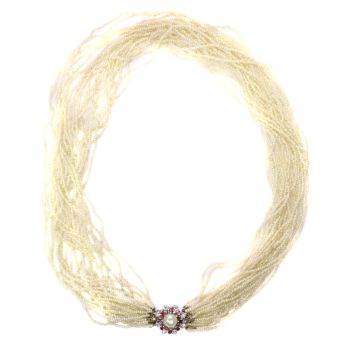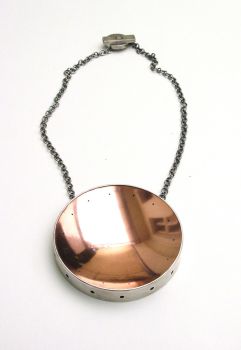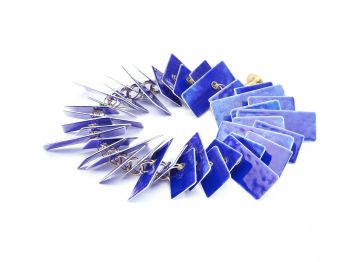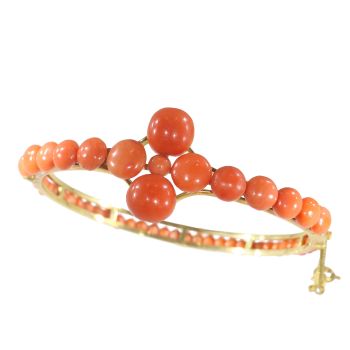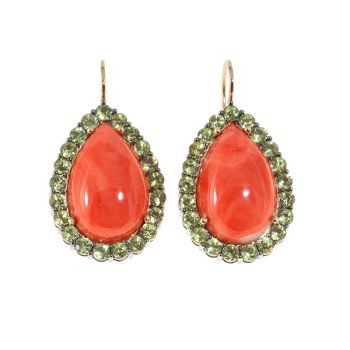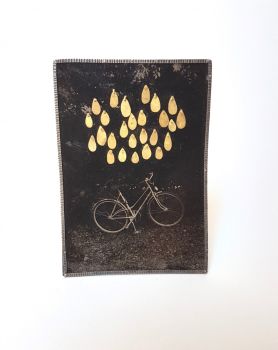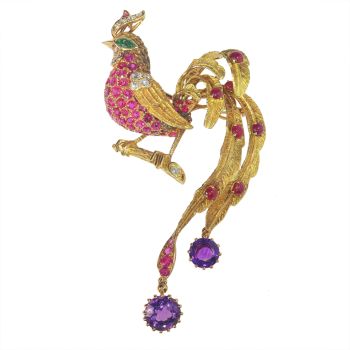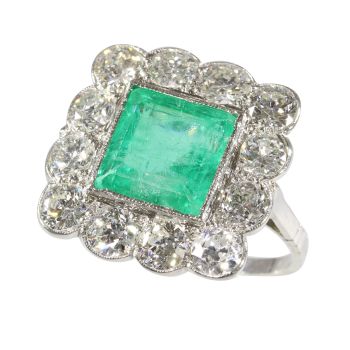Antique blood coral long necklace with thick beads 1900
Unknown artist
Coral
€ 6.850
Adin Fine Antique Jewellery
- About the artwork
Antique jewelry object group: bead necklace
Condition: very good condition
- (more info on our condition scale)
Style: Victorian - Victorian decorative arts refers to the style of decorative arts during the Victorian era. The Victorian era is known for its eclectic revival and interpretation of historic styles and the introduction of cross-cultural influences from themiddle east and Asia in furniture, fittings, and Interior decoration. Victorian design is widely viewed as having indulged in a regrettable excess of ornament. The Arts and Crafts movement, the aesthetic movement, Anglo-Japanese style, and Art Nouveaustyle have their beginnings in the late Victorian era.
- See also: Victorianor more info on styles
Period: ca. 1900
- (events & facts of this era, poetry of this era, fashion of this era)
Precious stones: 108 coral beads with a diameter between 10mm and 12mm
Extra information:Conventional Buddhist tradition counts the beads at 108, signifying the mortal desires of mankind. The number is attributed to the Mokugenji (soapberry seed) Sutra wherein Shakyamuni Buddha instructed King Virudhakato make such beads and recite the Three Jewels of Buddhism. In later years, various Buddhist sects would either retain the number of beads, or divide them into consecutive twos, fours, for brevity or informality.
A decorative tassel is sometimes attached to the beads, flanked by talismans or amulets depending on one's local tradition. Because prayer beads are often painted in pigment, various traditional schools attribute a consecrationritual by the Sangha to the beads, to "open the eyes" for the purpose of achieving Enlightenment unique to the Karma of each believer. (From: Wikipedia)
Dimensions: total length 100,00 cm (39,37 inch) - See picture with a ruler in cm and inches
Weight: 197.90 gram (127.25 dwt)
Reference Nº: 19262-0321
Copyright photography: Adin, fine antique jewelry
- About the artist
It might happen that an artist or maker is unknown.
Some works are not to be determined by whom it is made or it is made by (a group of) craftsmen. Examples are statues from the Ancient Time, furniture, mirroirs, or signatures that are not clear or readible but as well some works are not signed at all.
As well you can find the following description:
•“Attributed to ….” In their opinion probably a work by the artist, at least in part
•“Studio of ….” or “Workshop of” In their opinion a work executed in the studio or workshop of the artist, possibly under his supervision
•“Circle of ….” In their opinion a work of the period of the artist showing his influence, closely associated with the artist but not necessarily his pupil
•“Style of ….” or “Follower of ….” In their opinion a work executed in the artist’s style but not necessarily by a pupil; may be contemporary or nearly contemporary
•“Manner of ….” In their opinion a work in the style of the artist but of a later date
•“After ….” In their opinion a copy (of any date) of a work of the artist
•“Signed…”, “Dated….” or “Inscribed” In their opinion the work has been signed/dated/inscribed by the artist. The addition of a question mark indicates an element of doubt
•"With signature ….”, “With date ….”, “With inscription….” or “Bears signature/date/inscription” in their opinion the signature/ date/ inscription has been added by someone other than the artist
Are you interested in buying this artwork?
Artwork details
Related artworks
Unknown artist
Cristallo façon de Venise Drinking Glass1600 - 1650
Price on requestPeter Korf de Gidts - Antiquairs
Unknown artist
An Indian part-gilt silver-clad ceremonial sceptre or mace with a tiger’s head1850 - 1900
Price on requestZebregs & Röell - Fine Art - Antiques
 Curated by
Curated byDanny Bree
Unknown artist
IMPORTANT AND RARE LARGE INDIAN 'COMPANY STYLE' PAINTING ON IVORY DEPICTING A PARADE1850 - 1900
Price on requestZebregs & Röell - Fine Art - Antiques
 Curated by
Curated byDanny Bree
1 - 4 / 12Lawrence Alma-Tadema
"Caracalla and Geta: Bear Fight in The Colloseum, AD 203" 1907
Price on requestGallerease Selected
 Curated by
Curated byDanny Bree
1 - 4 / 24- 1 - 4 / 24
- 1 - 4 / 22
- 1 - 4 / 12











